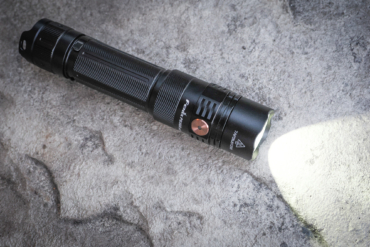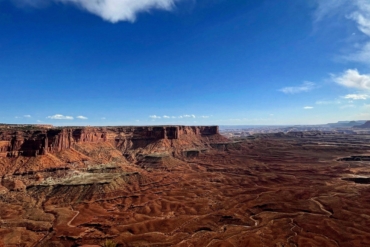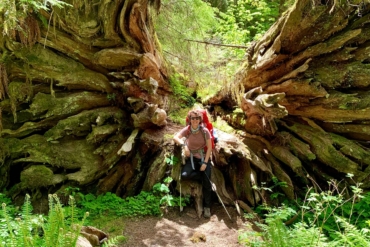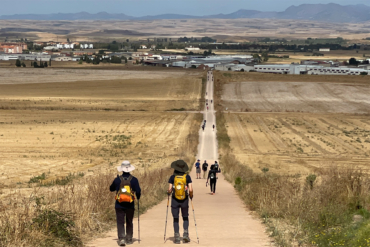[leadin]You’d love to hike across the continent, but let’s face it: You have a job. High routes are a dose of concentrated exploration that can cure your adventure jones in a long weekend.[/leadin]

Throughout my twenties, I was a dirtbag backpacker. I worked just a few months per year and saved most of my earnings so that I could hike throughout the others. I deliberately avoided “adult” responsibilities like a career, spouse, children, and mortgage/debt.
Those years were productive. I walked 7,800 miles across the continent on the Sea-to-Sea Route, linked up the West’s greatest ranges on the 6,875-mile Great Western Loop, and survived a 4,700-mile expedition around Alaska and Yukon. The interim years were filled with shorter trips, and in total, I hiked over 30,000 miles.
But around my 30th birthday, I made a conscious choice to relocate from Neverland. I wanted a permanent address, more storage than a half-dozen plastic totes, and an income in excess of the poverty line. I also met my eventual wife, who was a package deal with a feline fur child.
With this change in lifestyle, I became caught in a predicament: I was no longer able or willing to undertake the multi-month expeditions of yesteryear, but it was still important to me that I have bold, meaningful, and unique backpacking experiences.
In high routes, I found the solution.
About High Routes
Buzz Burrell, a mentor and occasional hiking partner, succinctly describes high routes this way: “Go high, and stay as high as possible without any technical climbing.” I’ll agree, but point out there is some consideration for logistics, scenery, and payoff, too.

High routes are not recognized by land managers, and they are not marked in the field. They are largely off-trail and do not hesitate in traveling across extensive talus, scrambling on class 3 slabs, or plunging through thick brush. Vertical relief is extreme.
In the early-1980s, Steve Roper pioneered the concept with his 195-mile Sierra High Route, which he proposed as a more adventurous alternative to the John Muir Trail. Despite other opportunities, especially in the West, only recently have other options been formalized.
Guides are now available for the 97-mile Wind River High Route, 125-mile Kings Canyon High Basin Route, and 104-mile Southern Sierra High Route. Efforts are underway to develop a Glacier Divide Route and a Trinity Alps High Route. I expect the concept to expand, including to non-mountain wilderness areas like the Colorado Plateau.
Why High Routes?
A high route is designed to be the finest backpacking experience available in a single mountain range, watershed, or canyon system, offering an unrivaled concentration of best-of features (although usually not every single one). When worthy terrain peters out, a high route terminates; it does not continue on for days or weeks through marginal landscapes before reaching another notable destination. Depending on your prior familiarity with an area, a high route can be a defining capstone course or an ambitious attempt at one-stop shopping.

Bring your A-game. Unlike a conventional long-distance trail, you cannot expect to finish if you are simply willing to put in the time and learn along the way. A high level of preparation, fitness, skills, and emotional maturity are prerequisites. And, even then, you want luck on your side — it will be difficult to overcome unfavorable field conditions or a weakness within your team.

High routes are also attractive for their relatively short lengths. You need not quit your job, sell your house, and be disowned by your family in order to hike one. Budget 1-2 weeks, depending on the route and your estimated pace; shorter segments can be section-hiked in 3-7 days.
For ambitious backpackers who have mastered on-trail hiking, high routes are a new challenge and an opportunity to develop new skills. For former thru-hikers who lack the free time they once had (like me), or who have already completed the long-distance trails that interest them, high routes are a practical yet inspiring option. High routes are most appropriate for — but still not necessarily appealing to — intermediate and advanced backpackers.
Before Your First High Route
If high routes are speaking to you, I’d like to offer four tips.
- Take them seriously. Your first high route will probably be the most difficult backpacking trip that you’ve ever done. By the end, you’ll be mentally and physically wiped.
- Plan to hike fewer miles per day. High routes are much slower than normal backpacking trips, due to being off-trail and having extreme vertical relief. When trying to predict your pace, consider your sustainable vertical change per day; your normal miles per day pace is far less relevant.
- Expect to bail early. High routes are more like mountaineering expeditions than normal backpacking trips, in that finishing a route is probably the exception, not the norm. It’s okay to turn back.
- Consider a section-hike. If you lack the necessary skills, fitness, or confidence for a high route thru-hike, attempt a shorter section of it. This will provide a similar experience but in a more accessible and safe manner.
Andrew Skurka is a Colorado-based adventurer, guide, speaker, and writer. He is the author of The Ultimate Hiker’s Gear Guide and a National Geographic Adventurer of the Year. More information, www.andrewskurka.com.






